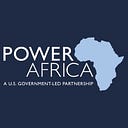The Nuts and Bolts of Transmission Line Projects — the Crucial Link for Sub-Saharan Africa’s Energy Future
Despite comprising tall metal structures, complicated sub-stations, and kilometers of wire, transmission lines are so familiar that they often blend into the landscape and don’t capture our attention.
But have you ever thought about what goes into constructing these lines, and why they are so critical for power delivery in Southern Africa?

Africa is the second-largest continent in the world but has woefully inadequate transmission infrastructure. A reliable power transmission network is fundamental in bridging sub-Saharan Africa’s electricity demand and supply gap, domestically and across borders.
Transmission lines carry power to a substation; from there, distribution lines feed the electricity into homes and businesses. Transmission infrastructure is also essential for the transition towards less carbon-intensive energy systems by transporting large-scale wind and solar energy from renewable energy power plants — often located in remote areas far from the consumer — to homes, businesses, and industries.
Power Africa: Driving Transmission Forward
Power Africa is working with governments, donors, and the private sector to advance key transmission projects to increase access to energy and ensure cost-efficient and reliable power supply in sub-Saharan Africa.
Power Africa works hand-in-hand with its partners to create the enabling environment that will accelerate deals, build institutional capacity, reinforce social and environmental standards, and bring projects to financial close and construction.
One such project is Mozambique’s Temane Transmission Project (TTP). The Mozambican utility Electricidade de Moçambique (EDM) is building a 563-kilometer (km) high-voltage transmission line that will deliver electricity from a power plant at Temane, in central Mozambique, to areas further south, ending in the nation’s capital, Maputo.
Power Africa supported the project’s evolving organizational and technical needs through an embedded advisor within EDM from January 2018 to December 2020. The advisor was responsible for setting up the TTP Project Management Office, coordinating TTP workstreams, and liaising with EDM, the owner’s engineer (OE), various consultants, and advisors until the TTP’s financial close in December 2020.
Zooming in on Mozambique’s Temane Transmission Project
A key component of Mozambique’s 2015–2024 National Energy Strategy is the development of a transmission system to connect Mozambique’s northern, central, and southern power grids to strengthen the country’s own internal energy system and its regional connectivity to the Southern African Power Pool (SAPP). The TTP forms part of this transmission system, the Mozambique Integrated Transmission Backbone System (STE Project), making it essential to the social and economic transformation underway in Mozambique and Southern Africa.
The TTP, once completed, will improve the reliability of electricity supply and increase the potential to add more variable renewable energy to Mozambique’s energy mix in the future. Furthermore, the project will enable EDM to develop several distribution projects to increase connections and create higher-value industrial jobs that can result from greater grid capacity. The project has so far directly created an estimated 1,700 jobs and benefitted rural communities through infrastructure development and upgrades like access roads and hospitals.

“It is amazing to have the opportunity to apply everything I have learned during my four years of education,” Belarmina Zacarias completed her degree in 2021 and moved from Maputo to Vilanculos to begin her first job at EDM.
Transmission projects, such as the TTP, are expensive, complicated, and labor- and time-intensive. It can take years to complete feasibility and environmental studies, secure financing, procure contractors, and transport equipment to construction sites. Strong project management by the owner’s engineer and seamless communication between multiple contractors is crucial for success.
EDM began construction of the 563-km transmission line and three new substations in Vilanculos, Chibuto, and Matalane in June 2021. The TTP is expected to be energized in December 2023.
The first step before digging foundations and erecting structures was to clear the line route and substation construction areas. This is a massive undertaking as it requires clearing thick bushes and trees in line with best social and environmental standards. Access roads had to be built so that construction vehicles and equipment could travel to the remote sites. And in some instances, houses too close to the line route needed to be moved, and communities resettled and compensated.




As construction progresses, materials are moved to the tower sites and assembled. Assembling one tower requires 10 to 15 people fitting and bolting parts. It can take around two to three days to put together. Once done, cranes are used to raise the towers. Lastly, teams string and install the conductors (wires). The final step is to adjust the sag of the conductors using survey equipment and do the final commissioning of the line.
Although a complex and lengthy process, progress on the TTP is visible on the ground. The interface between EDM, the owner’s engineer, and the various contractors is positive. It is a winning mix of international and local expertise.

TTP: Fast Facts
- Average tower height: 32 meters
- Distance between towers: Average 435 meters
- Number of parts to be assembled in one tower: Over 445 parts
- Meters of conductor lines: Over 6.5 million meters
- Cost per meter of conductor line: $220
- Cost of one tower: $10,000 — $32,000 depending on type
- Total average cost per km: $220,000
By sharing stories like Mozambique’s TTP, Power Africa hopes to shed light on the critical role of transmission infrastructure and the necessity for expanded and strengthened grids. Through continued partnerships and support for African government power utilities, we can bring reliable power to homes and industries to reduce energy poverty and fuel economic growth.
Now that you know more about the intricacies of transmission projects and their role in putting Africa on the path to universal electricity access, the next time you see transmission lines and towers, reflect on how they got there and how they ultimately impact people’s livelihoods.

Resources
- Understanding Power Transmission Financing: To address the financing gap for transmission infrastructure in sub-Saharan Africa, Power Africa and the U.S. Department of Commerce’s Commercial Law Development Program the Understanding Power Transmission Financing handbook. The handbook captures the state of African utilities on transmission infrastructure and proposes options to access the much-needed finance for its development, including by increasing private finance.
- Power Africa Transmission Roadmap to 2030: The Power Africa Transmission Roadmap was developed to help unlock electricity trade in the region by highlighting cross-boundary trade opportunities that can be exploited for broader regional electricity access and economic benefit.








